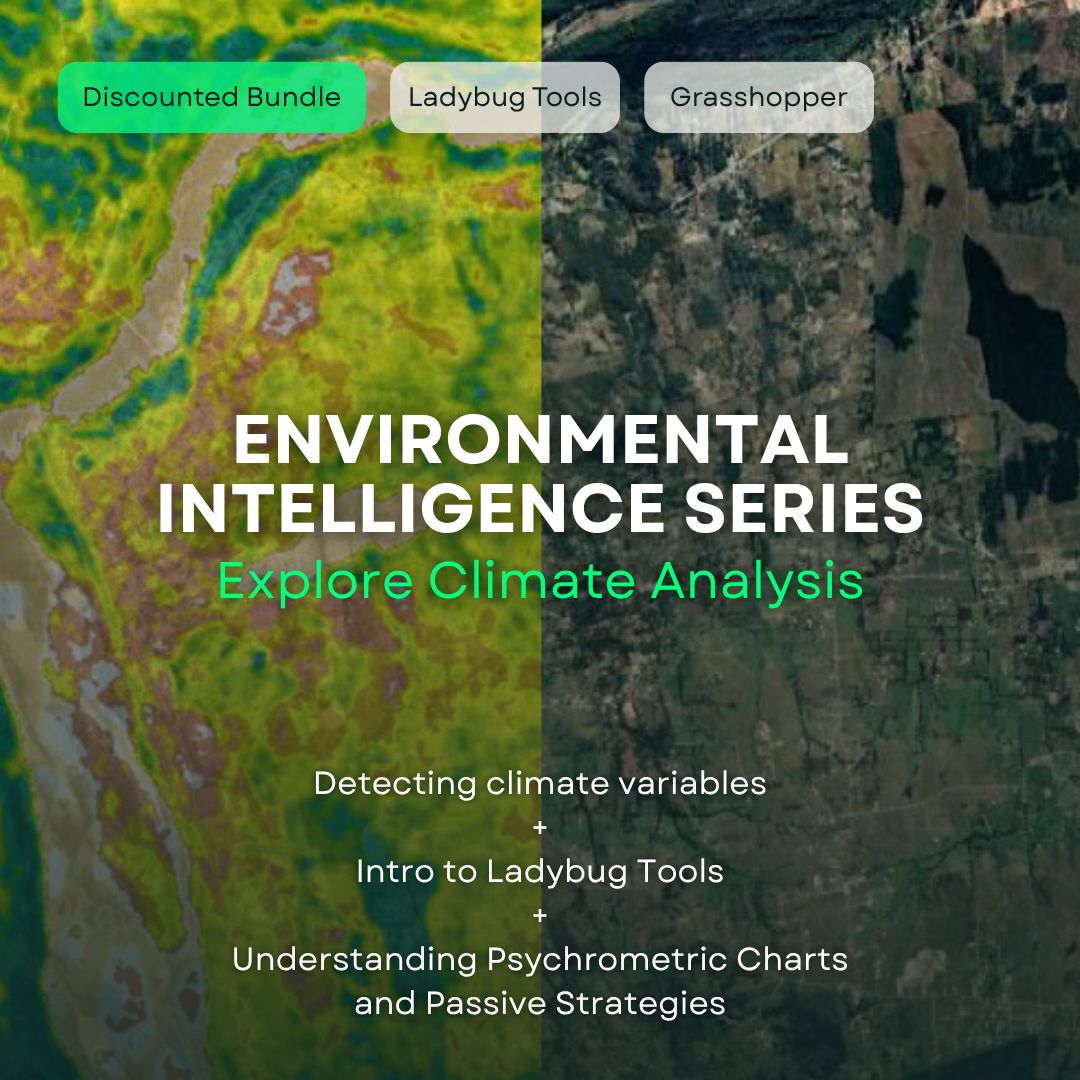
Environmental Intelligence Series
Explore Climate Analysis
The Environmental Intelligence Series is part of NORDFY’s broader EI program, which responds to increasing environmental pressures and the need for resilient, data-driven design. Across three focused online sessions, participants progressively move from foundational climate data skills to more advanced comfort and passive-strategy analysis.
In Session 1 – Detecting climate variables: Managing weather data, attendees learn how to gather and manage climate information using online sources and computational tools such as Ladybug Tools within Rhino and Grasshopper. The session emphasizes importing EPW/weather data, reading key variables like temperature, humidity, and wind, and understanding how these metrics begin to influence design thinking.
Session 2 – Intro to Ladybug Tools: Environmental Study Sheet builds on that foundation, introducing participants to the structure of environmental study sheets. Using Ladybug Tools, they learn to summarize climate insights into clear visual and quantitative outputs that can guide early design moves and inform communication with clients and collaborators.
In Session 3 – Understanding Psychrometric Charts and Passive Strategies, the focus shifts to advanced climate interpretation and comfort analysis. Participants work with psychrometric charts, enthalpy, and related metrics to understand thermal comfort and evaluate passive design strategies appropriate to specific climates. The session links data to action: how strategies such as shading, natural ventilation, or evaporative cooling emerge from the climate framework.
Together, the series equips participants with both the conceptual grasp and practical tool skills needed to embed environmental intelligence into design processes from the very beginning.
Across the three sessions, participants will learn to:
- Import and manage weather data, including key variables such as temperature, humidity, wind speed, and direction.
- Interpret basic climate metrics and understand their implications for site and building design.
- Use Ladybug Tools within Rhino/Grasshopper to visualize climate information and construct environmental study sheets.
- Summarize climate analysis into clear diagrams and narratives suitable for early-stage design decision-making.
- Work with psychrometric charts to relate climate data to human comfort, including the role of humidity, temperature, and enthalpy.
- Identify and evaluate passive strategies—such as shading, ventilation, massing, and envelope tactics—based on climate-specific opportunities and constraints.
- Understand how the Environmental Intelligence framework can scale from single-building analysis to broader questions of urban microclimate and resilience.
- Set up their own EI-style workflows using Rhino, Grasshopper, and Ladybug Tools for future projects.
Mentors

Alessandro Grossi
An accomplished architect with a specialized focus on Environmental Computational Design and Energy Efficiency, Alessandro blends advanced architectural expertise with a deep commitment to sustainability. Currently working as an AI-Powered Environmental Specialist at NORDFY, Alessandro brings a wealth of experience as an Environmental Design and Sustainability Specialist. He holds a Summa Cum Laude Master of Architecture (M-Arch) from Politecnico di Bari, an MSc with Highest Distinction in Sustainable Architecture and Energy from Pontificia Universidad Católica de Chile, and a specialized degree in Sustainable AI for Architecture from Gritnova. As a LEED Green Associate, he is dedicated to advancing sustainable practices in architecture through innovative design and cutting-edge technology.
Programme
Important Info:
- It is advisable to have active plans for the following tools: Midjourney, Prome AI, Krea AI and Runway. This tools covered have free versions, except for Midjourney.
- Basic knowledge of interior design and architecture is recommended.
